Is eBay's Restatement Of GMV Really Immaterial?
eBay recently announced they were making some pretty big changes to how they define Gross Merchandise Volume (GMV) on the platform.

Excerpt (emphasis mine):
The company has changed its definition of Gross Merchandise Volume (GMV) to align with customer money flows on its platforms
SAN JOSE, Calif., Dec. 15, 2021 /PRNewswire/ -- eBay Inc. (Nasdaq: EBAY), a global commerce leader that connects millions of buyers and sellers around the world, today announced it has changed its definition of Gross Merchandise Volume (GMV) to align with customer money flows on its platforms.
GMV provides a useful measure of the overall transaction volume on eBay's platforms and is correlated to net transaction revenue. The Company has updated its definition of GMV to include all paid transactions on its platforms inclusive of shipping fees and taxes. Previously, eBay reported GMV regardless of whether the buyer and seller actually consummated the transaction. This change has been enabled by the increased visibility derived from the Company's transition to managing payments globally.
The updated GMV definition has an immaterial impact on previously reported GMV. Please refer to the table at the back of this release for a restatement of historical metrics. The restatement of historical metrics, including GMV and active buyers, can also be found on the Investor Relations section of ebayinc.com. GMV under this new definition does not materially change guidance issued by the Company on October 27, 2021.....
eBay gave these adjusted GMV numbers, but did not provide any side by side comparison to make it easy to see how much of an impact the adjustments really had.



Since we're talking about definitions here, one question I have for eBay is how exactly do you define "immaterial"?
Plotting out the numbers on a chart is quite illuminating.
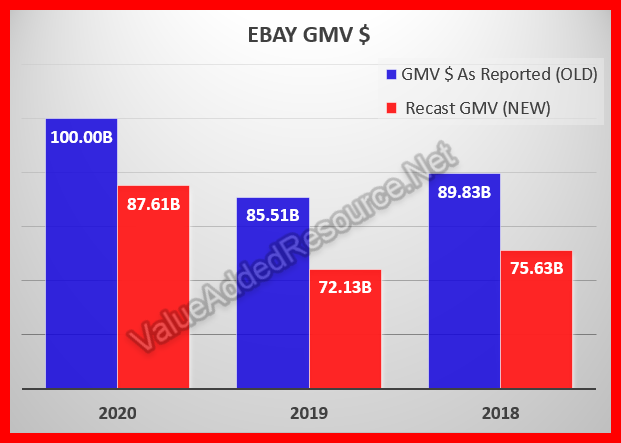

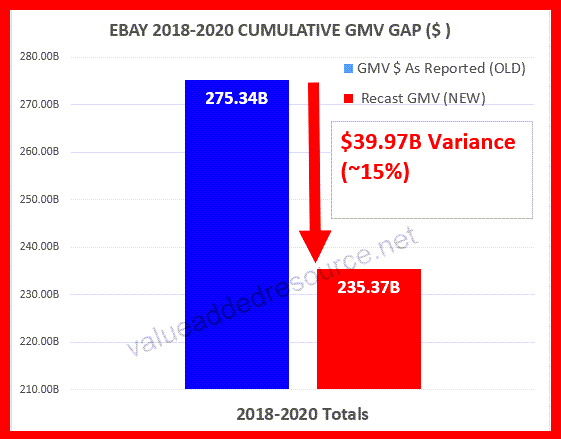
The restatement is ~$13 Billion per year for a total of almost $40 Billion. Of all the words that spring to mind here, immaterial wouldn't even make it on my list.
Why is there such a big adjustment?
eBay's GMV calculation has always been opaque with plenty of wiggle room to spare.
The previous definition lacked specifics, stating it was the total value of all successfully closed transactions, whether the buyer and seller actually consummated the transaction - including transactions where payment was never completed or the sale was not finalized.
While the new definition of GMV deserves credit for being slightly more transparent by stating it is the total of paid sales, the part about the inclusion of sales tax and shipping is still quite muddy.
Were sales tax and shipping previously included and they are simply now just acknowledging it or is this a new addition to the definition? Unfortunately, eBay's announcement doesn't make it entirely clear.
If this is a new addition and the argument is that shipping & tax should be included because these are things on which eBay assesses fees/generates revenue, that get's even stickier - while eBay has been including shipping in the calculation for seller fees for over a decade, the inclusion of sales tax did not take effect until September 1, 2020.
That leaves a big question mark for me about how exactly sales tax factored into this restatement. Did they include tax amounts going back to 2018 even though there were no fees assessed/revenue generated from them? Did they include eBay collected Marketplace Facilitator sales tax, seller collected sales tax, or both?
Or were the shipping and tax amounts already included in the previous definition and eBay is now just explicitly stating so going forward?
Due to this change, eBay is redefining Active Buyer figures as well.
Previously, Active Buyers were also defined by "successfully closed" transactions, regardless of whether payment was ever completed.
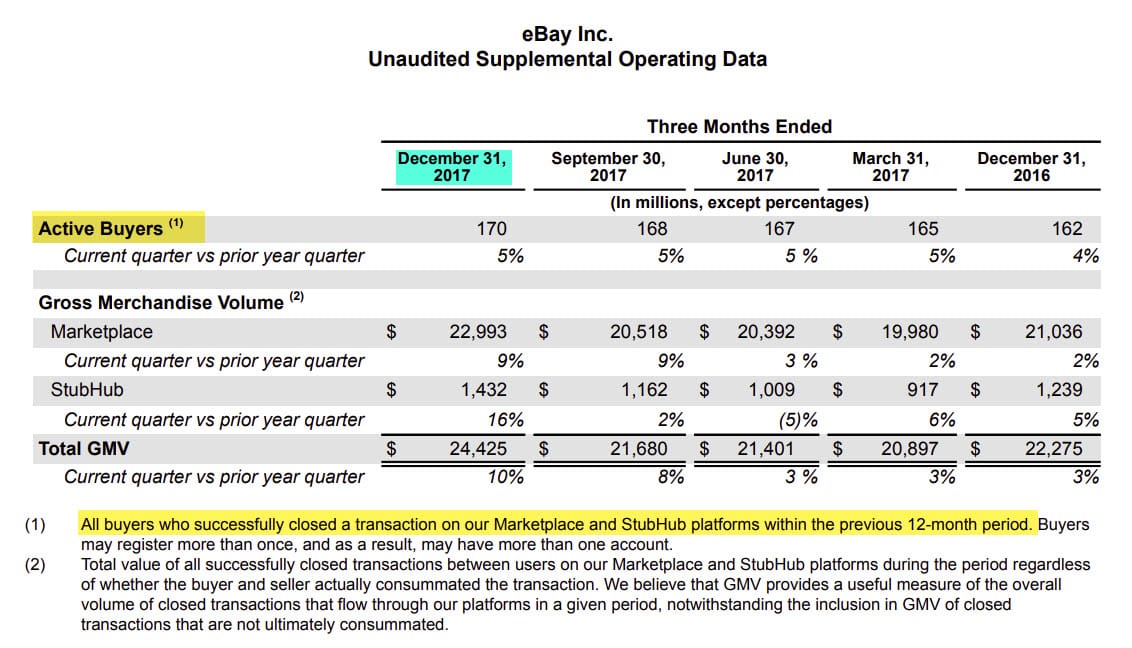
All buyers who successfully closed a transaction on our Marketplace within the previous 12-month period. Buyers may register more than once, and as a result, may have more than one account.
Now, Active Buyer and Seller stats will only include paid transactions in the previous 12 months.
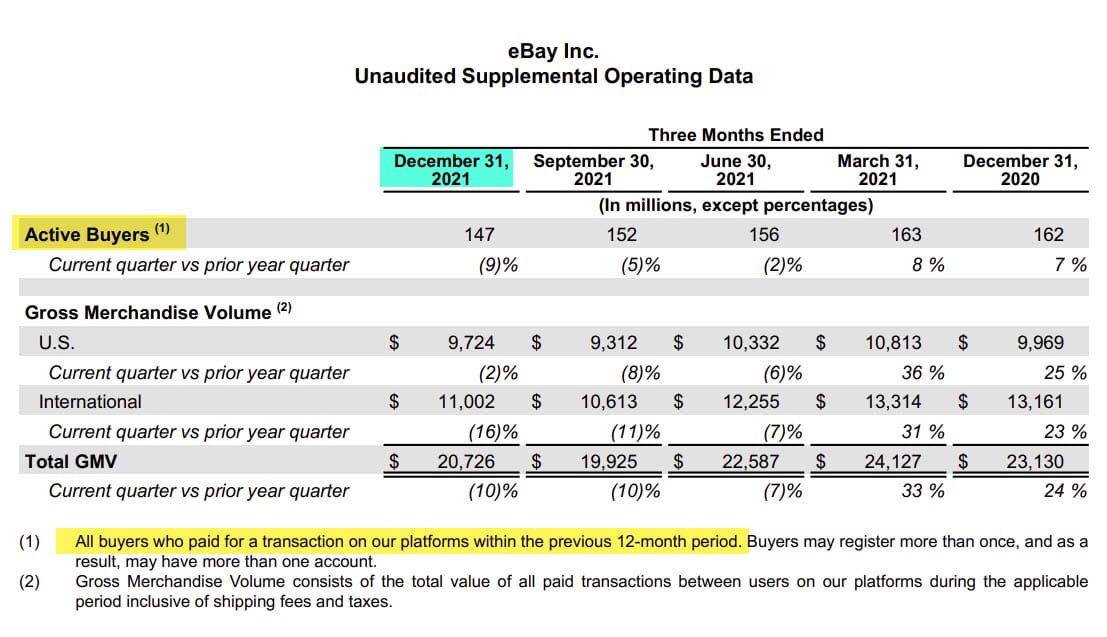
All buyers who paid for a transaction on our platforms within the previous 12-month period. Buyers may register more than once, and as a result, may have more than one account.
This has caused eBay to also restate Active Buyers going back to 2018 (figures from eBay's amended quarterly reports):
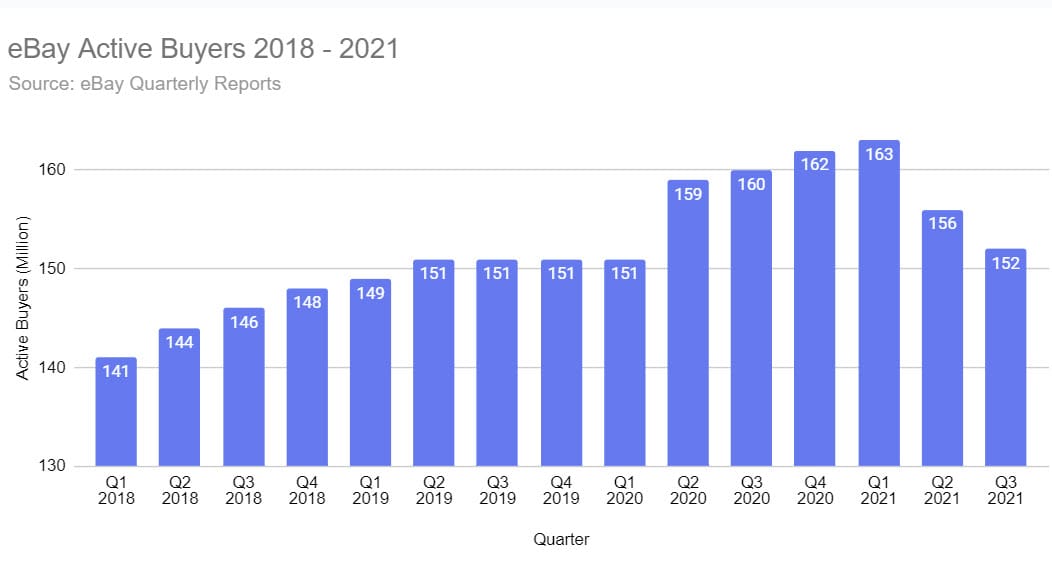
What does it mean for sellers?
Many sellers don't follow eBay stock prices and earnings calls closely and may even be wondering "why should I care about eBay's GMV?"
While investors and analysts have their reasons for interest in these numbers, sellers would be wise to take note too - if for no other reason than to gauge how our "trusted partner of choice" is handling transparency around important financial disclosures about the company and health and growth of business on the platform.
















